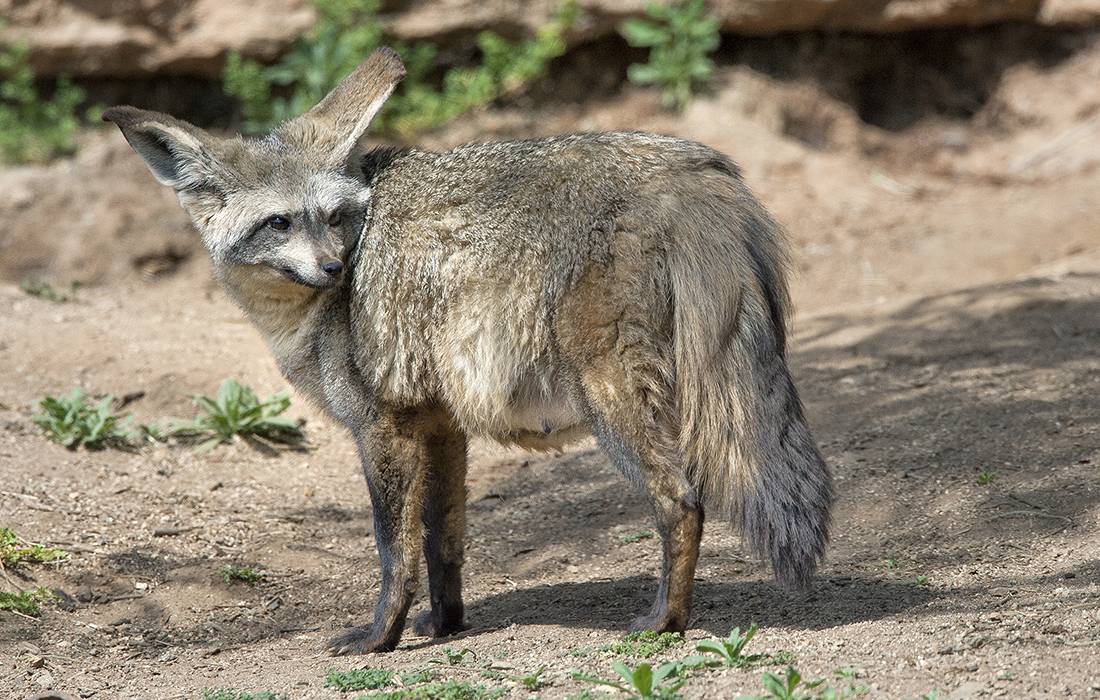BY Peggy Scott
Photography by Ken Bohn
Videography by Lee Rieber
Some may like it hot, and some may like it cold, but when it comes to foxes, nearly anywhere can feel “just right.” These compact little omnivores can be found around the world, inhabiting parts of every continent except Antarctica. While they share some common characteristics with other canids, foxes possess traits and adaptations all their own.
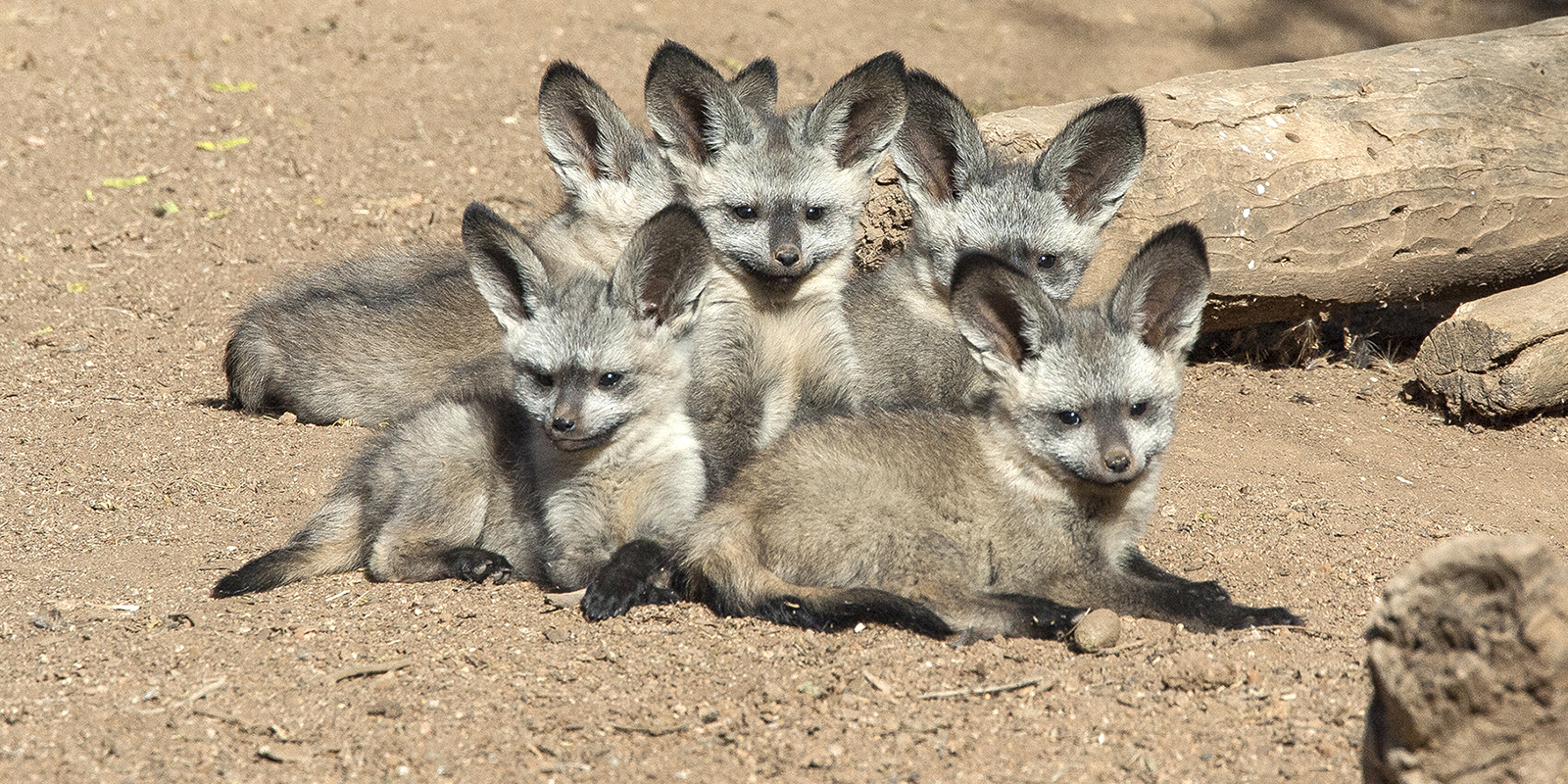
Fox Fact File
More compact than their canine cousins such as wolves and dogs, foxes max out at around 20 pounds, and live in small family groups or even alone. Foxes all sport pointy, upright ears, a pointed little snout, and a long, bushy tail. Male foxes are called reynards, tods, or dogs, and females are called vixens. And their offspring? Baby foxes are kits. Collectively, a group is referred to as a “skulk,” a “leash,” or an “earth” of foxes.
Far from finicky, most foxes can make a meal out of invertebrates like insects, small vertebrates like reptiles and birds, or even eggs and plants. Some species, however, are a little more selective, like the crab-eating fox, which dines almost exclusively on, well, you guessed it. Appetite-wise, foxes are smart: while they eat a little over two pounds of food a day, they will also save some, burying their “doggie bag” leftovers under soil, leaves, or snow to enjoy later. Three fox species can be found in the Zoo and Safari Park collection, and each has its own unique appeal.
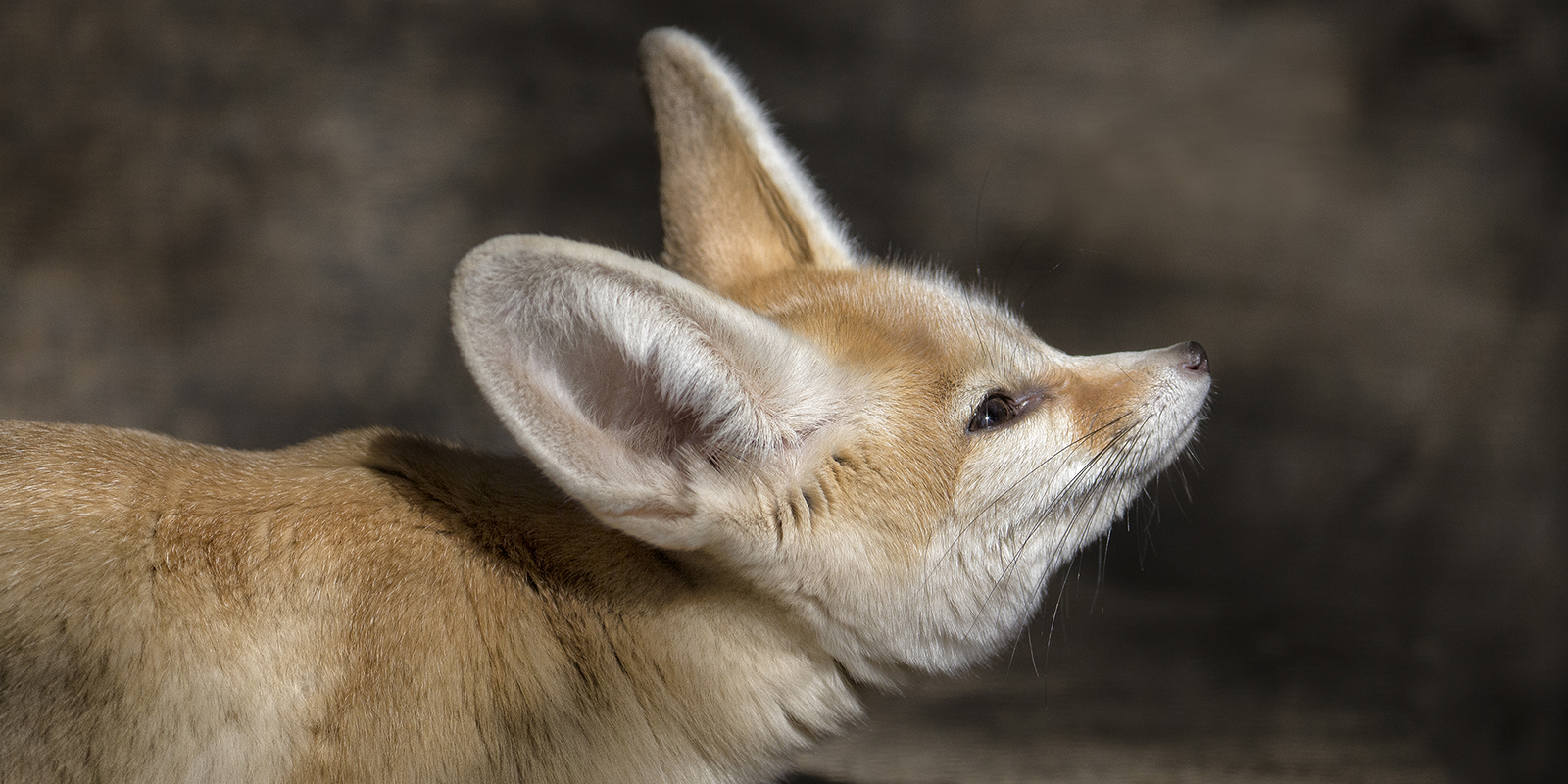
They’re All Ears
Native to the dry, sandy regions of North Africa, the fennec fox Vulpes zerda is the smallest fox species, measuring about 15 inches long (plus an 8-inch tail) and weighing about 3 pounds. Large, dark eyes sit atop the fox’s tiny, pointed face, which is framed by those characteristic jumbo-size ears. The largest in relation to body size of all canids, a fennec fox’s ears can be half the length of its body! Those awesome ears do double duty: they allow the animal to hear prey moving around underground, as well as help dissipate heat under the hot desert sun. Thick, cream-colored fur both protects the fennec fox from the blazing sun and insulates it against the cold at night. Its color helps the fox blend in with its sandy surroundings. Fur also grows around the fox’s paw pads, offering heat protection and traction.

TUNED IN
A fennec fox’s ears can be half the length of its body and can pick up the sounds of prey moving around underground.
Mostly carnivorous and favoring insects, snails, rodents, birds, and bird eggs, fennec foxes won’t pass up the opportunity to nosh on the occasional fruits and berries. Socially, fennec foxes are monogamous, and a pair lives with their offspring in a family of up to 10 members. The underground burrows can be quite elaborate and expansive—over 30 feet in length. Creating such a haven sounds like a big job, but these industrious little animals can dig with great speed—and the resulting burrows interconnect, forming a comfy underground community. Fennec foxes line their dwellings with soft materials such as bits of fur and feathers, to make them comfortable when they sleep during the day.
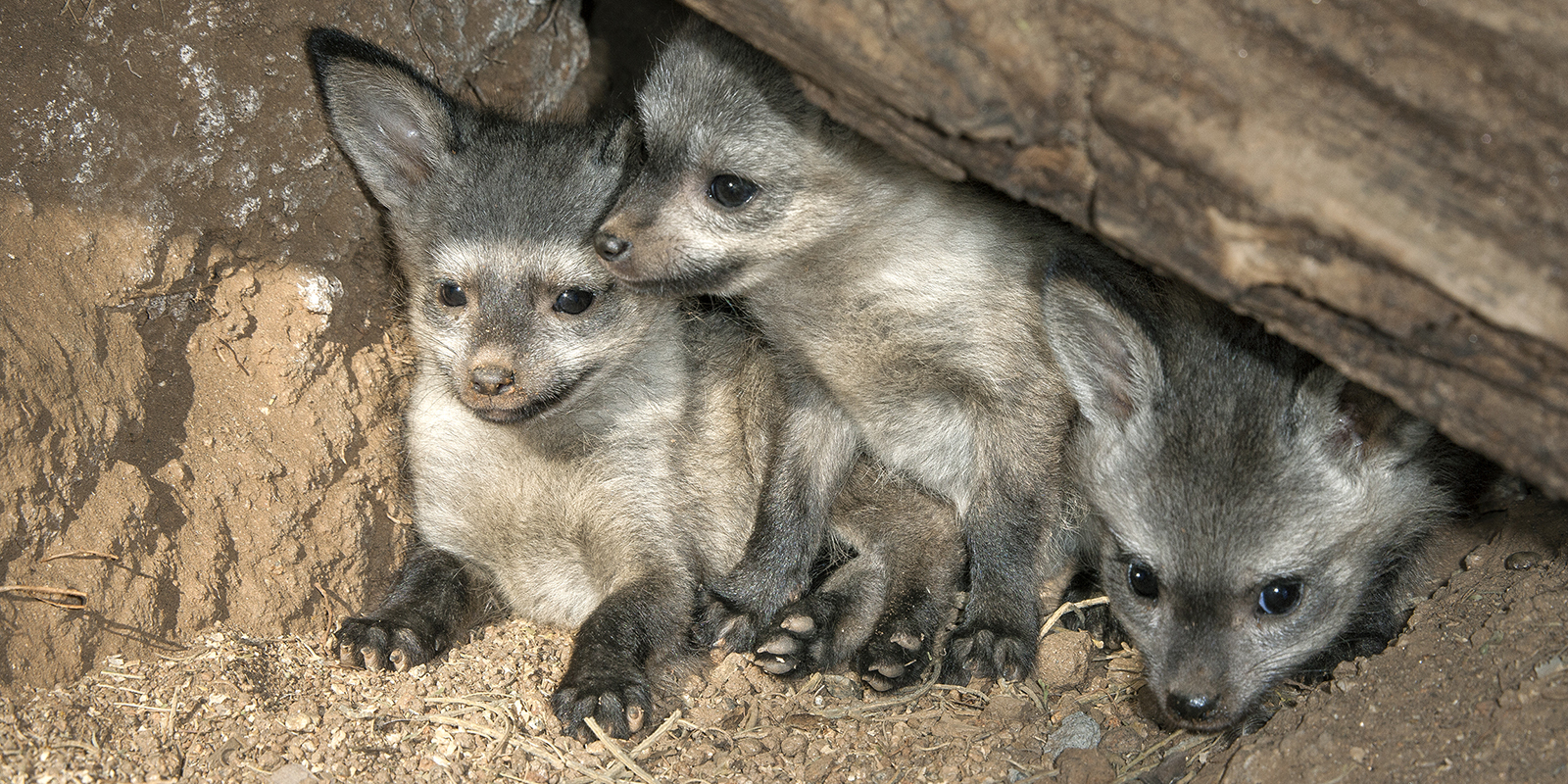
“Kit” Friendly
When it comes to taking care of its youngest members, a clan of bat-eared foxes Otocyon megalotis is a model of teamwork. From the tips of their oversized (five-inch-long) ears to the end of their bottlebrush tail, bat-eared foxes are a lesson in better living through cooperation.
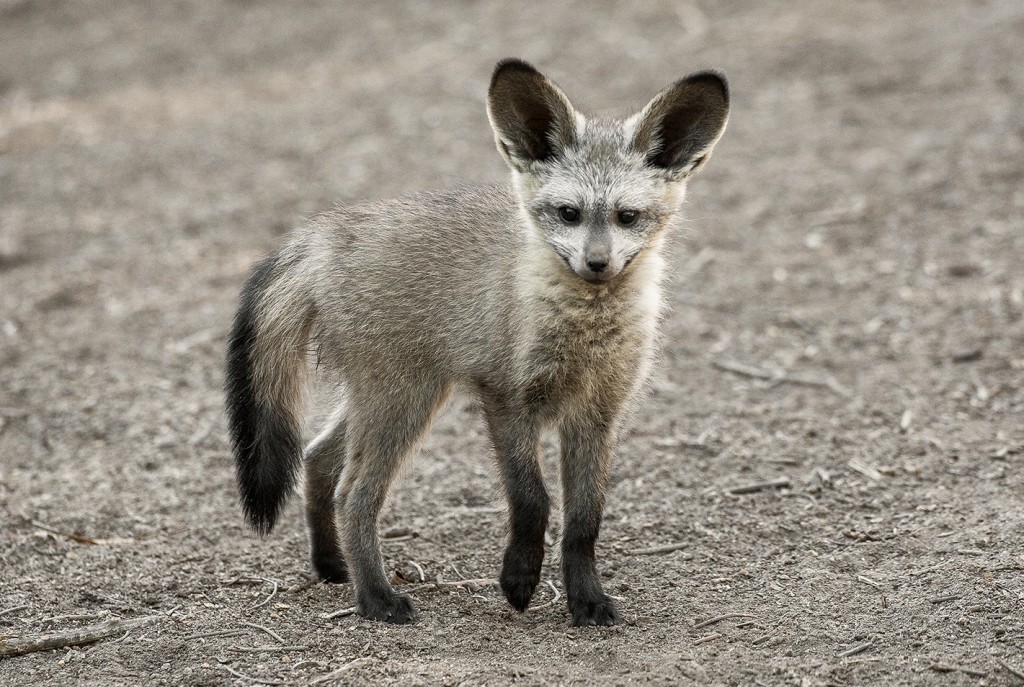
FAMILY AFFAIR
In a bat-eared fox group, it’s all for one and one for all—especially when taking care of the youngest members.
The mainly nocturnal little mammals have learned, apparently, that when you’re only around a foot tall and 7 to 12 pounds in a land full of jackals, eagles, and hyenas waiting to grab you, there is—and had better be—strength in numbers. Their name comes, of course, from those satellite-dish-like ears that help the animal dissipate heat, plus pick up the sounds of insects and other goodies crawling around underground in the dry, short-grass savannas and brush of eastern and southern Africa.
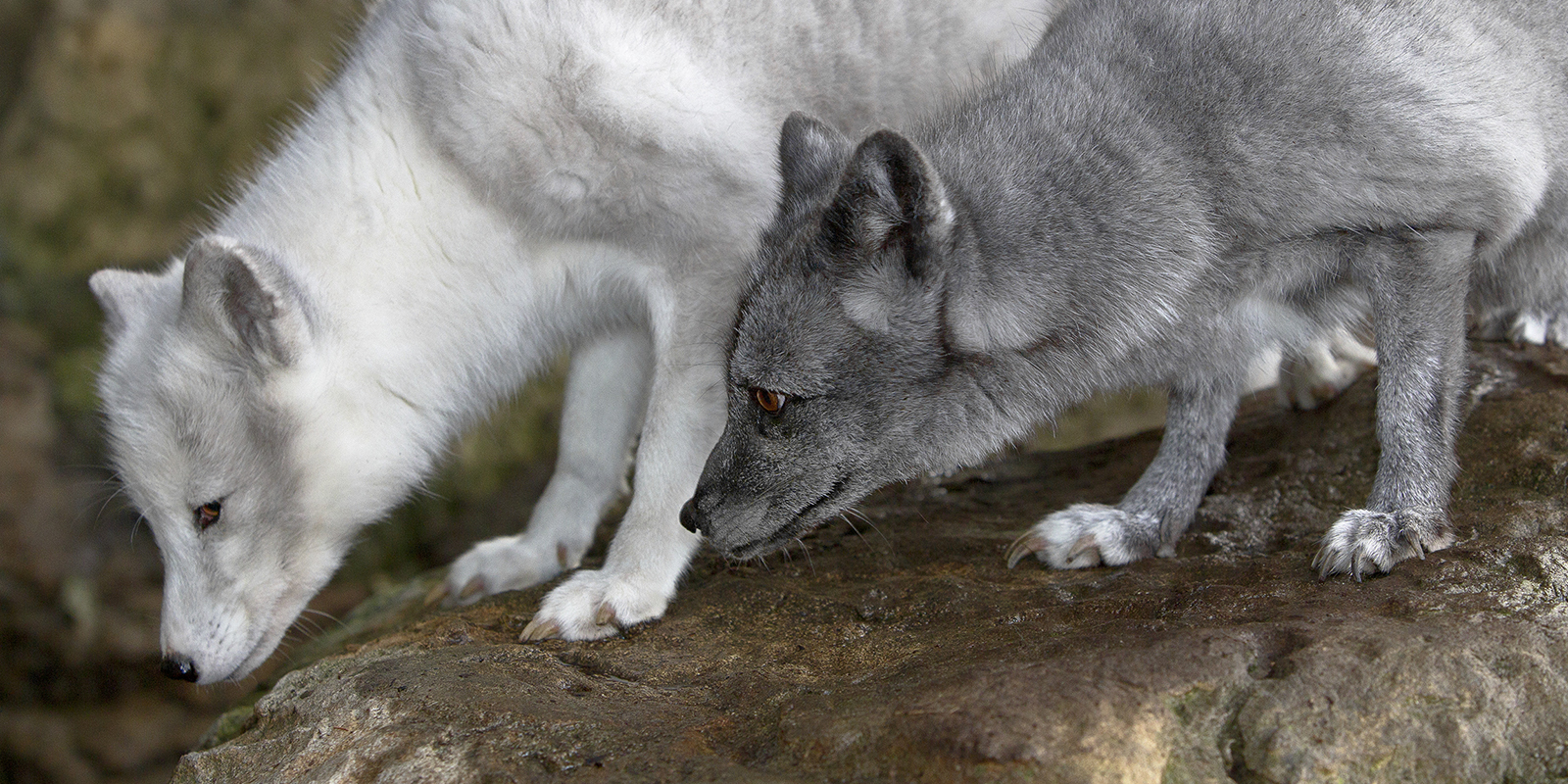
Cool Customers
The Arctic fox Vulpes lagopus is the smallest carnivore that remains active during the harsh Arctic winter. Males average 22 inches in length, plus a foot-long tail, and weigh about 8 pounds; females weigh about 6 pounds. These hardy little creatures can maintain a consistent, cozy body temperature regardless of the outside temperature. Arctic foxes live in the tundra regions of Alaska, Canada, Greenland, Russia, and Scandinavia, as well as Iceland, where they are the only native land mammal. They can survive frigid temperatures as low as -50 degrees Fahrenheit. The tundra where they live is a barren, rocky place without much vegetation. Arctic foxes dine mainly on lemmings, but they will eat whatever they can find in their cold world, even if it means cleaning up the leftovers from other predators such as polar bears.
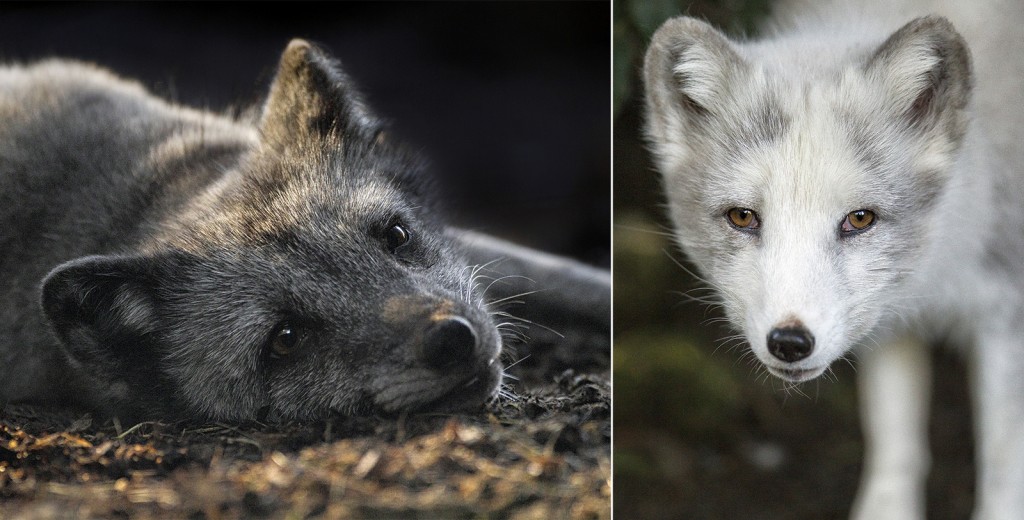
SHOWING THEIR COLORS
The darker coat of the blue phase Arctic fox (pictured above, left) is good camouflage for the animal’s coastal environment, while the white “polar phase” fox (above, right) blends in to its snowy habitat.
Its beautiful coat, ranging from white to blue-gray, keeps the Arctic fox warm. Another cold-weather adaptation is the lush tail, which can be curled around the animal, scarf-like, to protect that little pointed face from the elements. The Arctic fox’s cold-weather adaptations extend all the way to their paws. They are “hare-footed,” like the Arctic hare, with fur on the bottom of their feet to give them natural “snowshoes” for better traction. The species name for the Arctic fox, lagopus, means “hare-footed” in Greek.
The Arctic fox’s fur also helps it survive in different environments. White Arctic foxes are “polar phase,” allowing them to blend into their snowy surroundings. “Blue phase” foxes, on the other hand, are often found along the shoreline, where their coloring acts as camouflage against the jumble of rocks.
In any color, these clever carnivores are enchanting.

